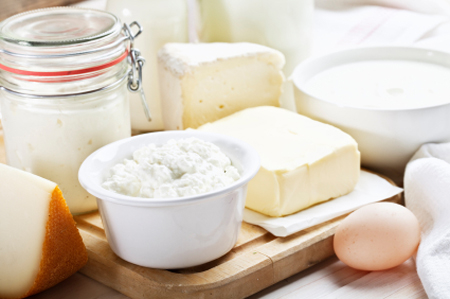 (Agrimoney) – Rabobank pushed back expectations for a dairy market revival, cautioning that “the world is still producing more milk” than it needs, and warning that price will stay “extremely low” for now.
(Agrimoney) – Rabobank pushed back expectations for a dairy market revival, cautioning that “the world is still producing more milk” than it needs, and warning that price will stay “extremely low” for now.
The agricultural lender – which had forecast that prices would “start to rise” in the July-to-September quarter, “gaining more momentum” later in 2015 – said that a “deterioration” in market fundamentals had scuppered prospects for a recovery this year.
Rabobank lowered its price forecast for whole milk powder prices in the July-to-September period from $3,200 a tonne to $2,400 a tonne, while prices for the start of 2016 were seen at $2,900 a tonne, compared with the $3,550 a tonne forecast in the last report.
No ‘rays of light’
Dairy prices enjoyed a short revival in the first quarter of 2015, off the back of drought fears in New Zealand, the world’s largest exporter.
But Rabobank said “the rays of light for dairy demand we identified in our previous quarterly have so far failed to extend into a brighter environment for dairy sellers”.
The bank now forecast that the “first half of 2016 will bring improved prospects for the commencement of a meaningful price recovery”.
The market was likely to see “stronger upward momentum” in the second quarter of 2016, as stocks return to “more normal” levels.
No end to oversupply
The forecast for a delayed revival reflected the extent of oversupply, with the world “still producing more milk than the market currently needs.
“This imbalance is unlikely to be substantially corrected in the second half of 2015,” the bank said.
Production in New Zealand, the top milk-exporting country, is expected to fall by 1-2% this season, as low prices prompt herd cutbacks and reduce use of supplementary feed.
However, European Union volumes will rise by 1.6% in the second half of the year, with the removal of output quotas encouraging production, and fostering a 7% rise in the bloc’s exportable surplus.
Australia’s exportable surplus will rise by 4-5%.
Chinese growth slows
Meanwhile, on the consumption side, the bank highlighted in particular disappointing demand in Brazil, China and Russia, which between them account for 16% of global dairy use.
In China, by a huge margin the world’s largest milk powder importer, Rabobank estimated that consumption has only growing by 1% in the first half of the year.
Demand from Russia has declined, thanks to weak incomes and currency devolution, as well as sanctions, while Brazilian demand was also see as “probably” contract due to declining real incomes.
The retreat of the top buyers has allowed an “extraordinary buying spree” from second-tier importers, such as Mexico, Japan, South East Asia and the Middle East.
However, it is difficult to determine yet whether such purchases are sustainable.
“The million dollar question for near-term market direction is whether this reflects an improvement in end-use of dairy in these regions, or a significant stock build by buyers looking to take advantage of cheap product,” said the bank.
Auction price plummets
Global dairy prices have been moribund since a sharp fall-off in Chinese buying demand last year, as consumption growth slowed, domestic production rose, and evidence of a large backlog of stock accumulated.
Milk prices at GlobalDairyTrade (GDT) auction, which is produced by New Zealand dairy giant Fonterra, have plummeted to six-year lows, although the most recent event showed a stabilisation for the all-important skimmed and whole milk powder prices.
During the last week’s GDT trading event, whole milk powder was priced at $2,327 a tonne, with skimmed milk at $1,978 a tonne.
Earlier this month Synlait, a New Zealand dairy company, said that it was “confident” that the price recovery will happen in this season, which in the country runs to May 2016.




